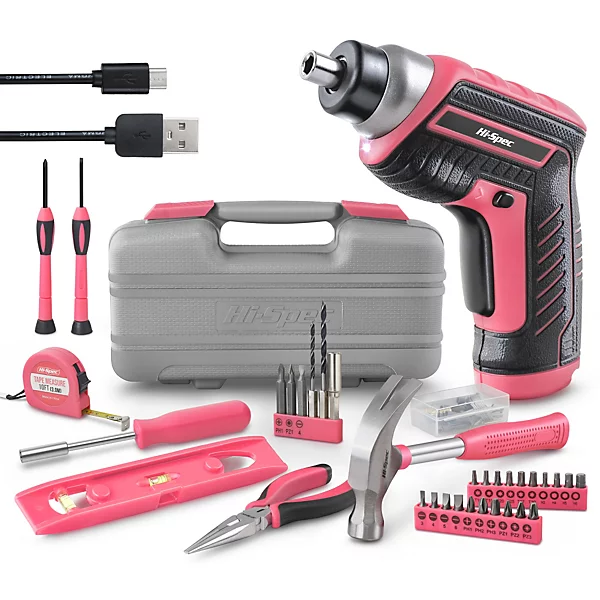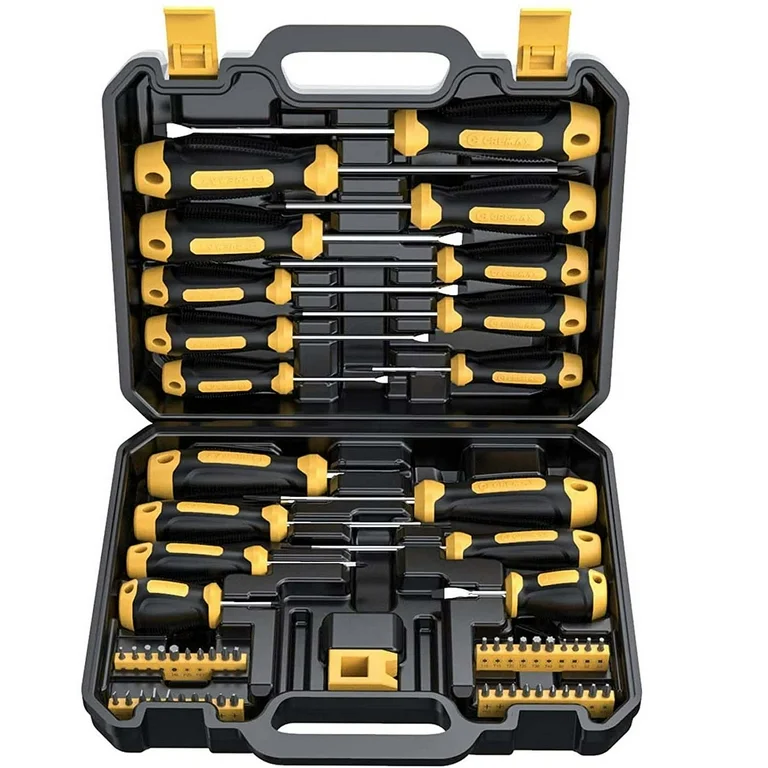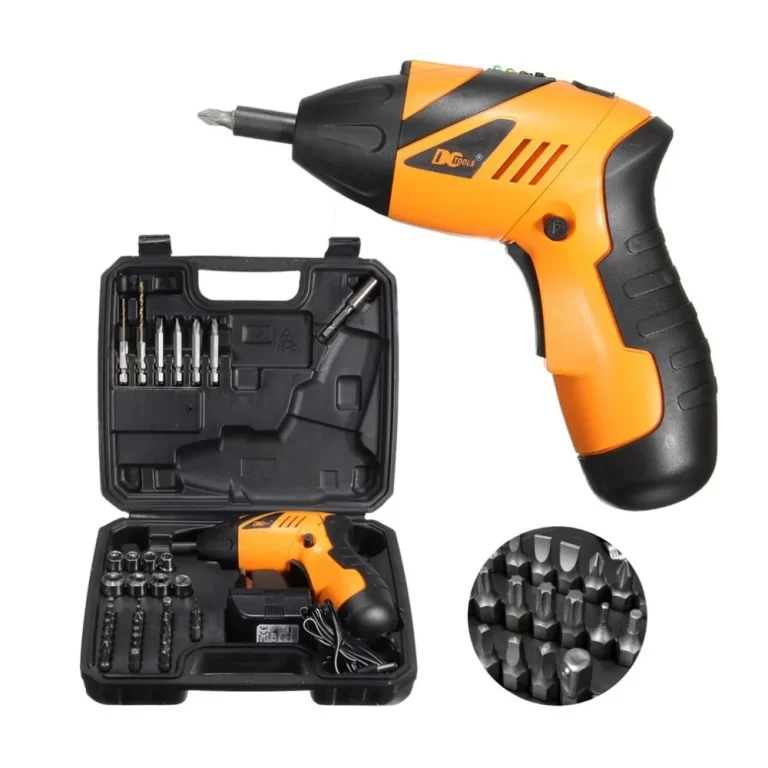
Streamlining Assembly: The Rise of Automatic Screwdriver
The Evolution of Screwdriving Technology
The journey of screwdriving technology has been marked by innovation and improvement. From simple hand-operated tools, the industry has moved to sophisticated machinery. The automatic screwdriver is one such leap forward. These devices have transformed how industries approach assembly tasks. Early screwdrivers required manual labor, which limited speed and consistency. Later, basic electrical screwdrivers improved speed but varied in precision.
Enter the era of automation. Modern automatic screwdrivers have become the norm in high-volume production environments. They provide consistency, precision, and can work tirelessly. They interface seamlessly with assembly systems.
The evolution has been driven by the need for faster, more reliable assembly. Manufacturers demand tools that can keep up with the production pace and not compromise on quality. The technology now even provides data collection capabilities. This data informs maintenance schedules and optimizes processes.
Automatic screwdrivers came as a response to an evolving industrial landscape. They offer a combination of speed, precision, and reliability. This combination was once deemed unachievable. With each advancement, from manual to electric, and now to automatic systems, the goals of streamlining production and reducing human error have moved closer. In the assembly industry, the automatic screwdriver has become a symbol of progress and efficiency.
Key Advantages of Using Automatic Screwdrivers in Manufacturing
The adoption of automatic screwdrivers in manufacturing brings numerous benefits. Let’s delve into the key advantages they offer:
- Increased Productivity: Automatic screwdrivers can work continuously without fatigue. This increases the throughput and helps meet high production demands.
- Consistency and Quality: These tools ensure each screw is driven with the same torque. This uniformity reduces the chance of product defects, ensuring high-quality output.
- Time Efficiency: Swapping out manual screwdrivers for automatic ones cuts down on assembly time. Tasks complete faster, significantly speeding up the entire production process.
- Labor Costs: Automatic screwdrivers require less manual labor, reducing labor costs. They free up workers for more complex tasks that can’t be automated.
- Flexibility: With programmable settings, automatic screwdrivers adjust easily to different screw types and sizes. Manufacturers don’t need to change tools for different products.
- Data Collection: Many automatic screwdrivers come equipped with data collection capabilities. They gather valuable information that can be used for process optimization.
- Reduced Error Rate: By taking out the human element, automatic screwdrivers minimize the risk of human error. This ensures more reliable and effective manufacturing processes.
These advantages illustrate why the automatic screwdriver has become an essential tool in modern manufacturing. By integrating these devices, businesses can achieve more with less effort, ensuring a competitive edge in the market.

Various Types of Automatic Screwdrivers and Their Applications
Automatic screwdrivers come in various types, each suited for different applications. Some common types include:
- Handheld Automatic Screwdrivers: These are compact and portable tools designed for ease of use. They help operators in lower-volume or space-restricted environments.
- Fixed Automatic Screwdrivers: These devices are often found in assembly lines. They can mount to workstations or integrate into machinery for stable and precise operations.
- Robotic Automatic Screwdrivers: Offering high levels of precision and flexibility, these are part of robotic arms in advanced production settings.
- Multiple Spindle Screwdrivers: Ideal for simultaneous work on multiple screws, they are perfect for quick and uniform assembly tasks.
Each type of automatic screwdriver performs essential roles in manufacturing:
- Handheld units are versatile. They move wherever the task requires.
- Fixed screwdrivers speed up processes like electronics assembly.
- Robotic units ensure precision in car manufacturing and aerospace.
- Multiple spindles work well in large-scale furniture production.
By choosing the right automatic screwdriver, companies enhance their manufacturing efficiency. They meet specific needs, whether it is flexibility, speed, or precision. The automatic screwdriver’s role is crucial in modern assembly work. It helps industries keep pace with ever-growing demands.
How Automatic Screwdrivers Enhance Efficiency and Precision
The incorporation of automatic screwdrivers in production lines dramatically streamlines operations. These tools are pivotal in optimizing efficiency and ensuring acute precision in assembly tasks. Here’s how they contribute to enhanced performance:
- Minimized Time Investment: Automatic screwdrivers eliminate the need for manual alignment and insertion. This reduces the time taken per screw, speeding up the entire assembly process.
- Consistent Torque Application: By automating torque control, these screwdrivers deliver consistent torque for each fastening action. This uniformity is crucial for high-quality product assembly and reduces the risk of over- or under-tightening.
- Improved Precision: Advanced sensors and controls help automatic screwdrivers achieve precise positioning and depth control. This ensures that screws are driven accurately, enhancing the integrity of the final product.
- Enhanced Product Throughput: Since automatic screwdrivers work tirelessly, there is a significant increase in the number of products assembled in a given timeframe. This improves overall throughput and capacity.
- Reduction in Human Fatigue: Freeing operators from repetitive motions helps avoid fatigue-related errors. Consequently, quality remains high and consistent.
- Lower Rework Rates: The precision of automatic screwdrivers significantly reduces the incidence of rework. This saves both materials and labor, contributing to cost-efficient production.
Every cycle of an automatic screwdriver is identical to the previous, which is nearly impossible to achieve by hand. The ability to program and reproduce exact movements makes these machines indispensable for manufacturers aiming for perfection in their products. Ultimately, the adoption of automatic screwdrivers is not just about enhancing efficiency and precision; it’s about reinventing the manufacturing process for robust, consistent, and high-quality output.

Integration of Automatic Screwdrivers in Automated Production Lines
The integration of automatic screwdrivers into production lines is a game-changer for manufacturers. Here are the key ways these tools are making a difference:
- Streamlined Workflow: Automatic screwdrivers sync with production lines to create a seamless workflow. This integration reduces stoppage times and enhances overall speed.
- Reduced Manual Intervention: The need for workers to handle individual screws diminishes. Operators now focus on oversight and control, not repetitive tasks.
- Precision and Alignment: Automatic systems ensure screws are placed correctly every time. They align screws with exactness, which manual methods can’t guarantee.
- Easy Integration: Modern automatic screwdrivers fit into existing lines with minimal disruption. They can communicate with other machines, making setup straightforward.
- Customization for Specific Tasks: These screwdrivers come with programming features. They adapt to different tasks, making them versatile for various products.
- Interconnected Data Systems: With built-in sensors, automatic screwdrivers collect valuable data. This data integrates with production systems to optimize every step.
By implementing these advanced tools, companies increase reliability and product quality. They also maintain competitiveness in a market that demands precision and speed. The role of automatic screwdrivers within automated lines is central to the modern industrial zeitgeist, pushing the boundaries of manufacturing capabilities.
The Economic Impact of Automatic Screwdrivers on Assembly Costs
The use of automatic screwdrivers has a strong economic impact on assembly costs. By employing these tools, manufacturers experience significant savings across different areas of production. We explore the key financial benefits:
- Reduced Labor Expenses: Automatic screwdrivers take over repetitive tasks. This allows the workforce to focus on more complex duties. It cuts down on labor costs.
- Lower Error Rates: Precision in screw placement means less rework. This reduces waste and saves money.
- Increased Assembly Line Speed: These tools work faster than humans. Faster assembly means more products made in less time. This boosts revenue potential.
- Maintenance Cost Benefits: Automatic screwdrivers have programmable settings. They face less wear and tear and lower maintenance costs follow.
- Energy Efficiency: Compared to manual labor, automatic screwdrivers use less energy. This leads to savings in electricity costs.
- Long-Term Investment Return: Though the initial investment might be high, automatic screwdrivers pay off over time. Continuous operation without fatigue increases production volume.
In conclusion, automatic screwdrivers not only enhance productivity and quality. They also lead to economical production by trimming down assembly costs. The return on investment is often realized within a short period, marking them as a wise choice for manufacturers keen on cost-saving measures.

Safety and Ergonomic Benefits of Automatic Screwing Systems
The use of automatic screwdrivers not only boosts efficiency and economy. They also promote safer and more comfortable work environments. Here’s how:
- Enhanced Safety: Automatic systems eliminate the need for constant manual handling. This reduces the chance of injuries tied to repetitive strain. Hands-free operation means fewer accidents and safer working conditions.
- Ergonomic Design: These screwdrivers are designed with ergonomic handling in mind. They minimize the discomfort that often comes with manual tools. This leads to better posture and less strain on workers.
- Reduced Noise Levels: Compared to manual screwdrivers, automatic ones are usually quieter. Lower noise helps prevent hearing damage and creates a more pleasant workspace.
- User-Friendly Interfaces: These systems often come with controls that are simple to understand. Workers can operate them with ease, reducing stress and mental fatigue.
- Less Hand-Arm Vibration: Automatic screwdrivers transfer less vibration to the user than manual ones. This cuts down the risk of developing vibration-induced conditions over time.
By focusing on the health and comfort of workers, businesses using automatic screwdrivers can see decreased sick leaves. They can also experience higher employee satisfaction. Additionally, these benefits contribute to a positive company culture. Overall, the ergonomic and safety advantages of automatic screwing systems support a sustainable work environment for all employees.
Future Trends in Automatic Screwdriving Technology
As we look to the future, automatic screwdriver technology is poised for even more breakthroughs. The developments to come will make production lines still more efficient, precise, and cost-effective. Here are the anticipated trends in this exciting field:
- Integration with the Internet of Things (IoT): Smart factories will employ interconnected devices. Automatic screwdrivers will share data with other machines for better process control.
- Advanced Robotics: Future screwdrivers may be part of more sophisticated robots. They will perform complex tasks with greater autonomy.
- Artificial Intelligence (AI): AI could enable screwdrivers to learn from their tasks. They will improve their performance over time without human input.
- Enhanced Customization: Upcoming models may offer more customizable settings. Manufacturers will fine-tune operations for specific products easily.
- Sustainability Focus: Eco-friendly designs are likely to gain traction. More energy-efficient models will emerge to reduce the carbon footprint.
- Improved User Interfaces: Simplified, intuitive user interfaces will become widespread. They will make it easier for workers to manage screwdriving tasks.
- Lightweight Materials: We may see automatic screwdrivers made with lighter materials. These will improve portability and reduce operator fatigue further.
- Wireless Technology: Screwdriver models may cut cords and go wireless. This will increase maneuverability and ease of use across different environments.
These advancements suggest that automatic screwdriver technology will continue to evolve. It will play a vital role in enhancing manufacturing processes worldwide. By embracing these trends, industries can maintain a competitive edge and achieve greater success.

